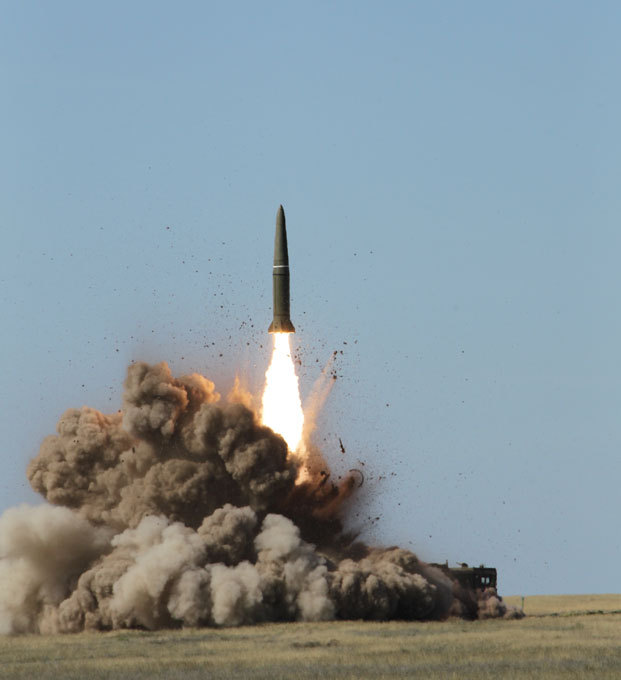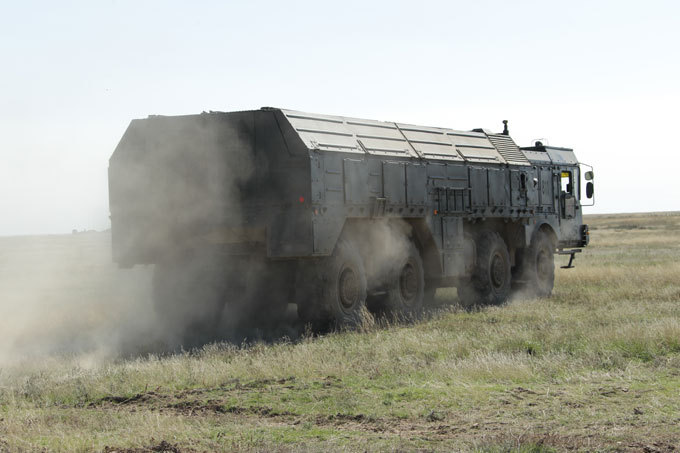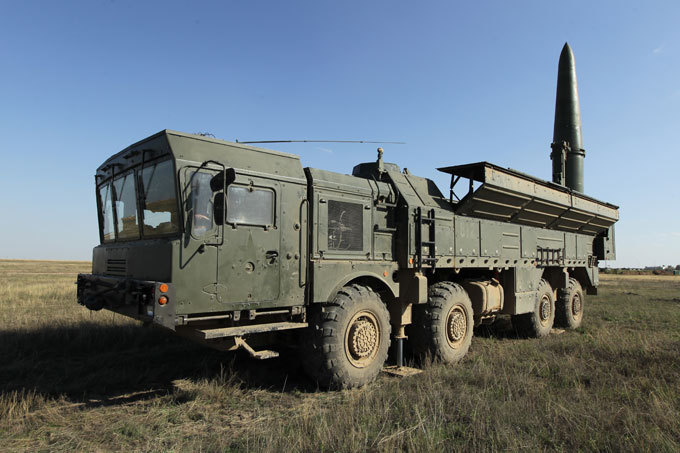Iskander-M: Superpower on wheels

In November 2016, the Russian military announced that the modernisation of the Iskander-M System was under way.A number of countries were reported to have shown interest in purchasing the export version of Iskander, but such possibility was only announced in early February 2017
In November 2016, the Russian military announced that the modernisation of the Iskander-M System was under way.A number of countries were reported to have shown interest in purchasing the export version of Iskander, but such possibility was only announced in early February 2017

The Iskander-M system is equipped with two solid-propellant single-stage guided missiles, model 9M723K1. Each one is controlled throughout the entire flight path and fitted with an inseparable warhead. Each missile in the launch carrier vehicle can be independently targeted in a matter of seconds. The mobility of the Iskander launch platform makes a launch difficult to prevent
The Iskander-M system is equipped with two solid-propellant single-stage guided missiles, model 9M723K1. Each one is controlled throughout the entire flight path and fitted with an inseparable warhead. Each missile in the launch carrier vehicle can be independently targeted in a matter of seconds. The mobility of the Iskander launch platform makes a launch difficult to prevent

Targets can be located not only by satellite and aircraft but also by a conventional intelligence center, by an artillery observer or from aerial photos scanned into a computer. The missiles can be re-targeted during flight in the case of engaging mobile targets
Targets can be located not only by satellite and aircraft but also by a conventional intelligence center, by an artillery observer or from aerial photos scanned into a computer. The missiles can be re-targeted during flight in the case of engaging mobile targets

Another unique feature of Iskander-M is the optically guided warhead, which can also be controlled by encrypted radio transmission, including such as those from AWACS or UAV
Another unique feature of Iskander-M is the optically guided warhead, which can also be controlled by encrypted radio transmission, including such as those from AWACS or UAV

The electro-optical guidance system provides a self-homing capability. The missile's on-board computer receives images of the target, then locks onto the target with its sight and descends towards it at supersonic speed.
The electro-optical guidance system provides a self-homing capability. The missile's on-board computer receives images of the target, then locks onto the target with its sight and descends towards it at supersonic speed.

The Russian Iskander-M travels at hypersonic speed of 2100-2600 m/s (Mach 6-7) at a height of 50 km. The Iskander-M weighs 4615 kg, carries a warhead of 710-800 kg, has a range of 500 km and achieves a circular error probable (CEP) of 5-7 meters. One ex-British Army general refers to a 2m accuracy, with a 800 kilo warhead.It is rumored that during flight it can maneuver at different altitudes and trajectories and can turn at up to 20 to 30 G to evade anti-ballistic missiles.
The Russian Iskander-M travels at hypersonic speed of 2100-2600 m/s (Mach 6-7) at a height of 50 km. The Iskander-M weighs 4615 kg, carries a warhead of 710-800 kg, has a range of 500 km and achieves a circular error probable (CEP) of 5-7 meters. One ex-British Army general refers to a 2m accuracy, with a 800 kilo warhead.It is rumored that during flight it can maneuver at different altitudes and trajectories and can turn at up to 20 to 30 G to evade anti-ballistic missiles.

Iskander has achieved sufficient accuracy, range and reliability to function as an alternative to precision bombing for air forces that cannot expect to launch bombing or cruise missile fire missions reliably in the face of superior enemy fighters and air defenses. Training and competence requirements are much lower than for normal air force assets such as a fighter bomber squadron utilizing guided bombs
Iskander has achieved sufficient accuracy, range and reliability to function as an alternative to precision bombing for air forces that cannot expect to launch bombing or cruise missile fire missions reliably in the face of superior enemy fighters and air defenses. Training and competence requirements are much lower than for normal air force assets such as a fighter bomber squadron utilizing guided bombs

Iskander is a tactical missile system designed to be used in theater level conflicts. It is intended to use conventional or nuclear warheads for the engagement of small and area targets (both moving and stationary), such as hostile fire weapons, air and antimissile defense weapons, command posts and communications nodes and troops in concentration areas, among others
Iskander is a tactical missile system designed to be used in theater level conflicts. It is intended to use conventional or nuclear warheads for the engagement of small and area targets (both moving and stationary), such as hostile fire weapons, air and antimissile defense weapons, command posts and communications nodes and troops in concentration areas, among others

In 2007, a new missile for the system (and launcher), the R-500 (ru) (range of applications up to 2000 km and more) cruise missile, was test fired. Now complex "Iskander-M" is transmitted to the troops complete with cruise and ballistic missiles. In 2013, army missile brigades first received missiles equipped with a new control system
In 2007, a new missile for the system (and launcher), the R-500 (ru) (range of applications up to 2000 km and more) cruise missile, was test fired. Now complex "Iskander-M" is transmitted to the troops complete with cruise and ballistic missiles. In 2013, army missile brigades first received missiles equipped with a new control system

The system can be transported by any means of transport, not excluding airplanes.The maximum power for the nuclear warhead is 50 kiloton TNT
The system can be transported by any means of transport, not excluding airplanes.The maximum power for the nuclear warhead is 50 kiloton TNT



